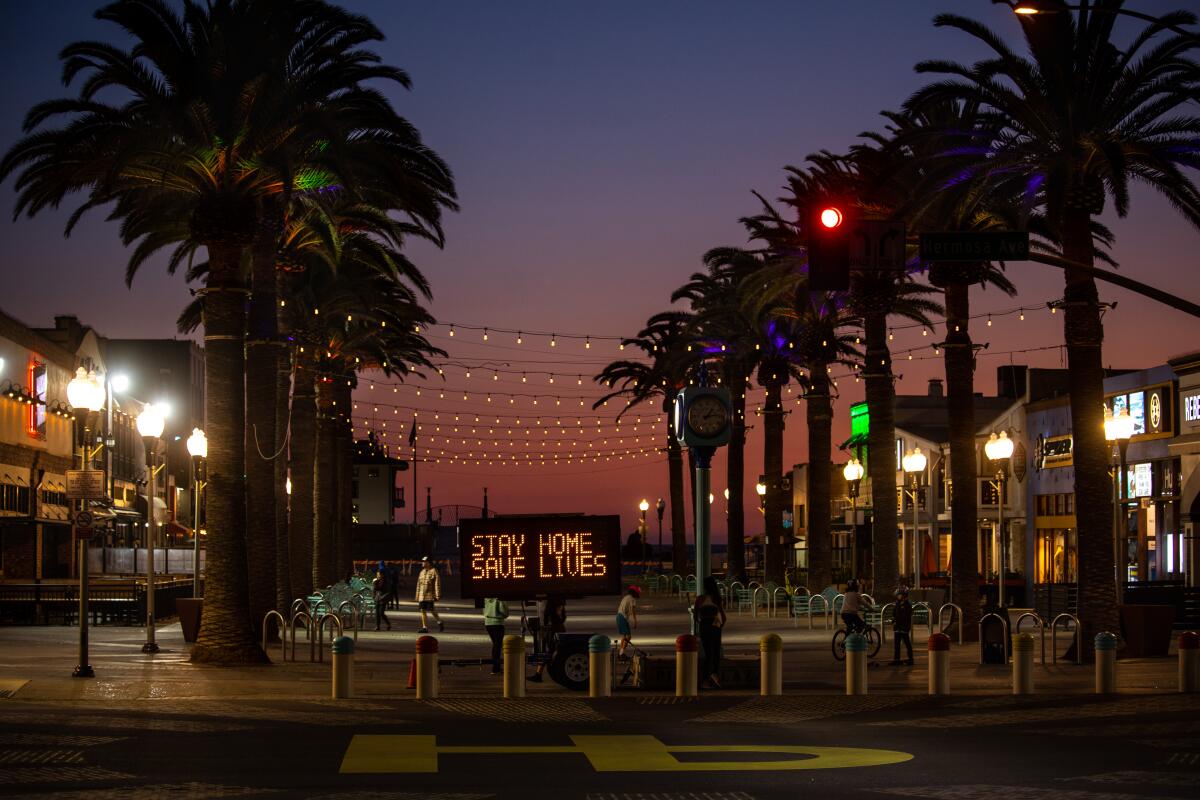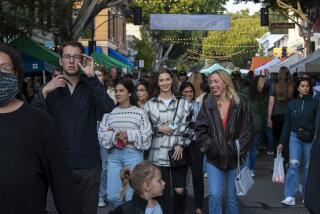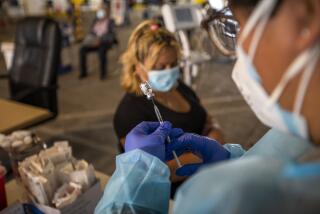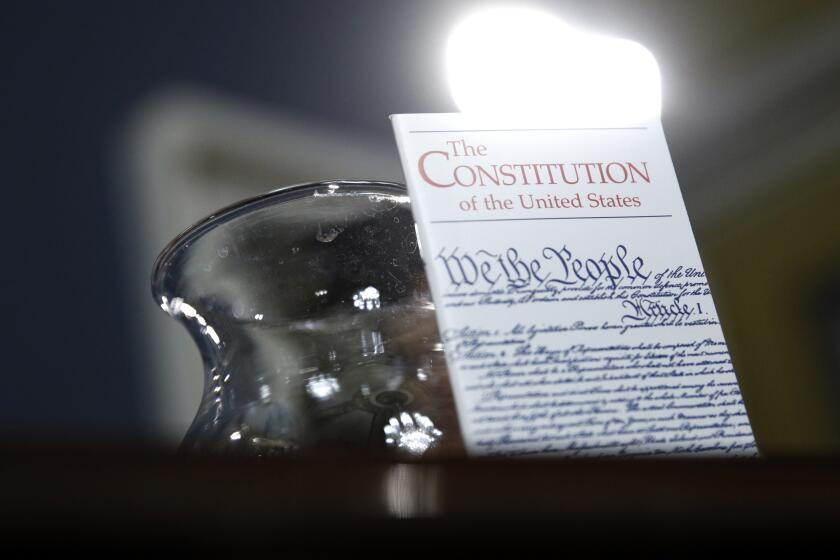Editorial: Of course we had to lock down. And it helped

- Share via
Friday marks exactly one year since California Gov. Gavin Newsom issued an order shutting down large swaths of the economy and requiring people to stay home in a desperate attempt to stop the spread of a mysterious and deadly pandemic. It was the first state to take such sweeping action, and it had no historical precedent.
Polls that spring found that most Californians — and most Americans — understood the necessity of such drastic measures to contain the novel coronavirus that causes COVID-19, even though they worried about the economic fallout. The urgency was driven home by the skyrocketing numbers of cases and deaths in New York City. But our understanding has waned over the last 12 months, as the state has endured various iterations of closures and new restrictions on personal movement, and now Californians may well wonder if all the financial hardship and isolation was worth it.
Public health experts say it was, no question, and we tend to agree — even knowing that the economic and psychological damage will take years to repair. There is evidence that the state and local restrictions on business and activity, as imperfect as they may have been, slowed the virus’ transmission over the course of the year, despite pockets of noncompliance. (Hello, people of Huntington Beach.) Indeed, San Francisco, which imposed a shutdown several days earlier than the state and had high compliance with safety protocols, saw fewer COVID-19 deaths than other large U.S. cities — just 436.
The chair of the UC San Francisco Department of Medicine, Dr. Robert Wachter, recently calculated that if the entire nation‘s death rate had been similar to San Francisco’s, then the U.S. would have lost only 162,000 people to COVID-19, rather than more than 539,000. That simple, back-of-the-envelope of kind of math doesn’t take into account the regional, cultural, environmental, racial and economic differences of various U.S. states, but it does make the point that the city that embraced pandemic restrictions fared so much better than other places.
Which is not to say that the California model was perfect. In retrospect, we know that the restrictions were often overly broad, and they took a heavy toll on many Californians’ livelihoods and ambitions. Meanwhile, the changing, complicated nature of the rules didn’t always make sense to people and bred skepticism in some quarters. Why keep malls open but close down outdoor dining? Were hair salons really a public health threat? Why couldn’t we open schools sooner? Even as people got tired of the imposition, enforcement of the restrictions by state or local authorities was virtually nonexistent.
State officials say that their focus was on saving lives and that any flaws in strategy stemmed from the paucity of data about the brand-new virus. It’s easy to forget how little we understood about how and why SARS-CoV-2 infected people in spring 2020, and that it was so much more widespread than suspected. Nevertheless, officials also say the pandemic clearly responded to state-imposed interventions. As predicted, cases waned in the spring after the shutdown went into effect, as they did after new measures were taken during infection waves in summer and winter.
But critics argue that the lockdown approach was an all-around failure because some states with more permissive rules saw fewer people die and suffered less financial harm.
Despite its restrictions and mandates, California’s death rate ranks 29th highest among U.S. states (meaning that 21 states had lower death rates). But comparisons by state are no more useful than those involving individual cities. California may have reported more COVID-19 cases than, say, Florida (though fewer deaths occurred here per capita), but that may well be because we conducted more tests. California also has higher density, poverty and dry air — all things that are associated with transmission of COVID-19.
And a number of states that didn’t take the same precautions, such as Arizona, have fared worse than California.
In-state death and case rates may also be misleading because they include the unknowable number of cases that may have been imported from other states. Witness the summer Sturgis motorcycle rally in South Dakota, a state that declined to impose pandemic restrictions in any meaningful way, whose participants carried the infection back to their home states.
Others argue that it was fear of the virus, not government lockdowns, that made people alter their behavior and curb infections. It’s possible, but how do you separate the two? Lockdowns communicated that the public should be afraid of COVID-19 because it was no run-of-the-mill seasonal respiratory virus.
Most troublesome are the irresponsible claims that the nation would have been better off if it had embraced the Great Barrington Declaration and isolated people at high risk of dying of COVID-19 while letting everyone else go about their business. The idea behind the declaration was to reach a safe “herd immunity” level by allowing younger, healthier people to get infected. Even if it were a practical approach — and it is not — it’s dangerous. Free spread of the virus encourages the emergence of variant strains that might end up being more deadly to everyone.
Critics of government lockdowns like to talk about cost-benefit analysis. That’s an odious idea because it indicates that there is some number of American lives that are expendable for the sake of economic stability. How does one even calculate the value of a life for that purpose? Would it have been “worth it” to trade 100,000 lives for the sake of keeping restaurants and theme parks open over the last six months? Thinking about a pandemic in those terms is ghoulish and inhumane.
It’s unlikely we will ever get the definitive answer on how many people are still alive today because of California’s lockdowns. But it’s safe to say that lives have been saved. Maybe ours. Maybe yours.
More to Read
A cure for the common opinion
Get thought-provoking perspectives with our weekly newsletter.
You may occasionally receive promotional content from the Los Angeles Times.










